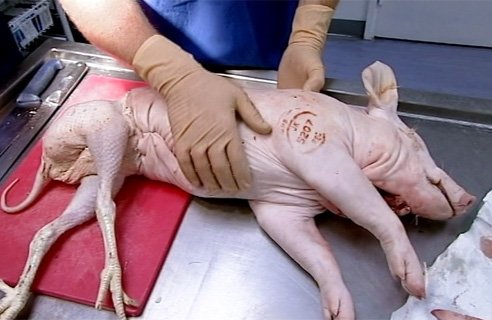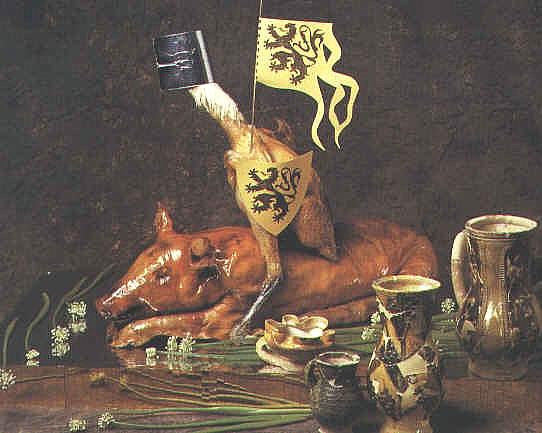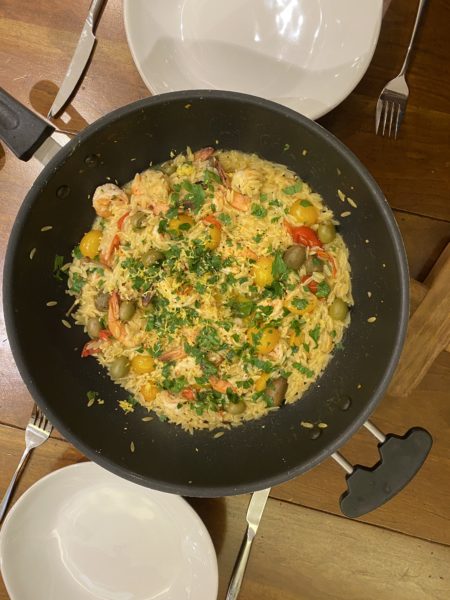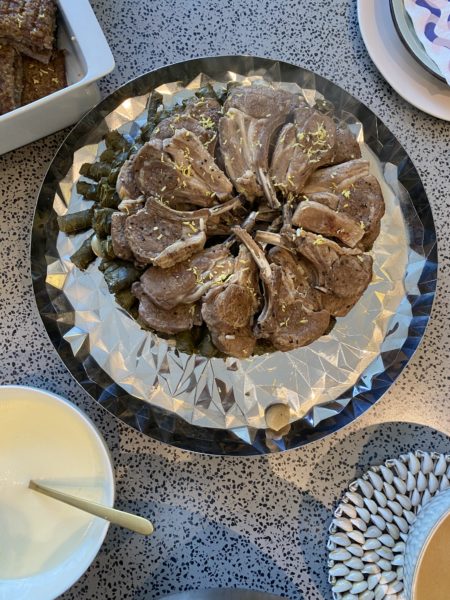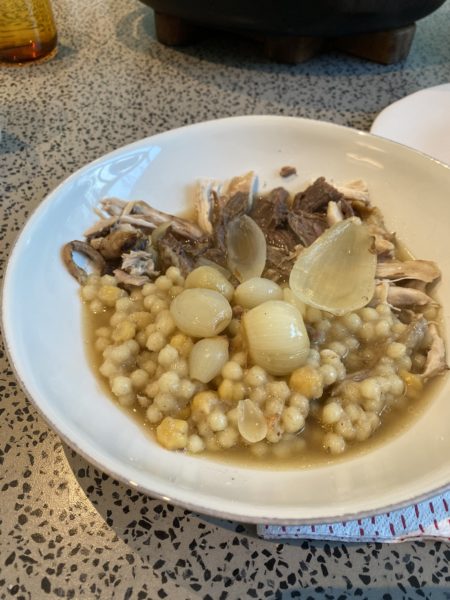So it’s thanksgiving and every food blog on the planet is dishing out juicy turkey and sweet potato pie recipes, so I decided to pitch in by introducing all of you to the wonderful world of Engastration, magnificent beasts and the downright bizarre.
Engastrination
Engastration designates the stuffing of one deboned bird into another, forming a multi-bird roast. Turducken is one application of this cooking method. It’s a dish where a chicken is stuffed into a duck which is then stuffed into a turkey. Hence the name: Tur(key) – duck – (chi)ken. A National Geographic article by Calvin Trillin, traces the origins of the dish to “Hebert’s Specialty Meats” in Louisiana, who have been commercially producing turduckens since 1985. The company prepares around 5,000 turduckens per week around Thanksgiving time [1].
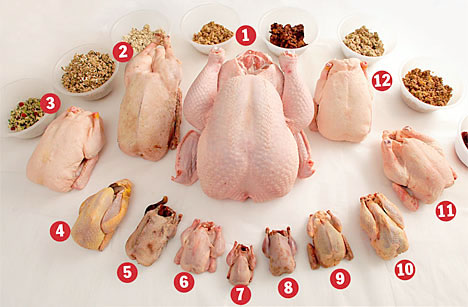
1. Turkey, 2. Goose, 3. Barbary duck, 4. Guinea fowl, 5. Mallard, 6. Poussin, 7. Quail, 8. Partridge, 9. Pigeon squab, 10. Pheasant, 11. Chicken, 12. Aylesbury duck
The American Turducken obviously isn’t the first or most original case of the engastration. From the english ‘Pandora’s cushion’, a boned goose stuffed with a boned chicken, which was stuffed with a boned pheasant, itself stuffed with a boned quail, to the True Love Roast which contains turkey, goose, chicken, pheasant, partridge, pigeon squab, Aylesbury duck, Barbary duck, poussin, guinea fowl, mallard and quail (12 birds, one for each day of Christmas) along with herb and fruit stuffings, to the Roman Trojan boar, a boar stuffed with birds, examples of this cooking trick vary widly. [2]
There is even claim of a Bedouin variation whereby chickens are stuffed with rice and hard-boiled eggs, then a lamb is stuffed with the chickens. The skinned, cleaned camel is then stuffed with the lamb, broiled over a charcoal pit and decorated with nuts.
Anderson Cooper of CNN interviews Chef Paul Prudhomme about cooking a Turducken.
Cockentrices
In a lavish dinner to impress the king of France, Henry VIII spent the equivalent of £5 million on a meat feast including 2000 sheep, 1000 chickens and a dolphin. Not content with real life animals, Tudor chefs also enjoyed bolting together bits of different creatures to make a dramatic beastie they called a cockentrice. [3]
You have got to hand it to those Middle Ages peeps, they sure where inventive when it came to whooping up a feast. To make a cockentrice one selects 2 or 3 animals (generally a pig and a capon) then sows them together turning them into a mythical creature. This abomination is a recipe that dates back to the Tudor period. It is truly theatrical and mythical and I find the need to create the disturbing meat monster quite fascinating.
In his Tudor Feast we see Heston creating otherworldly beasts and employing pyrotechnics in an attempt to entertain and amaze another group of celebrity guests.
Helmeted cocks
The Helmeted Cock is another fascinating combination of pigs and capons which appears in the medieval French Cookbook of Guillaume Tirel, known today as Le Viandier de Tailleven. Both animals were roasted separately then the Capon was made to ride the pig, while wearing the coats of arms that honored the lords present. It is also said that this marvel was served as a side dish in between main courses. [4]
So how do you feel about your thanksgiving turkey now?
References:
[1]Hesser, Amanda. “Turkey Finds Its Inner Duck (and Chicken)“, The New York Times, November 20, 2002. Accessed November 21, 2007.
[2]the engastration of a helmeted cock on Gimrack Hospital
[4]The Creation of Coqz Heaumezon Gode Cookery

